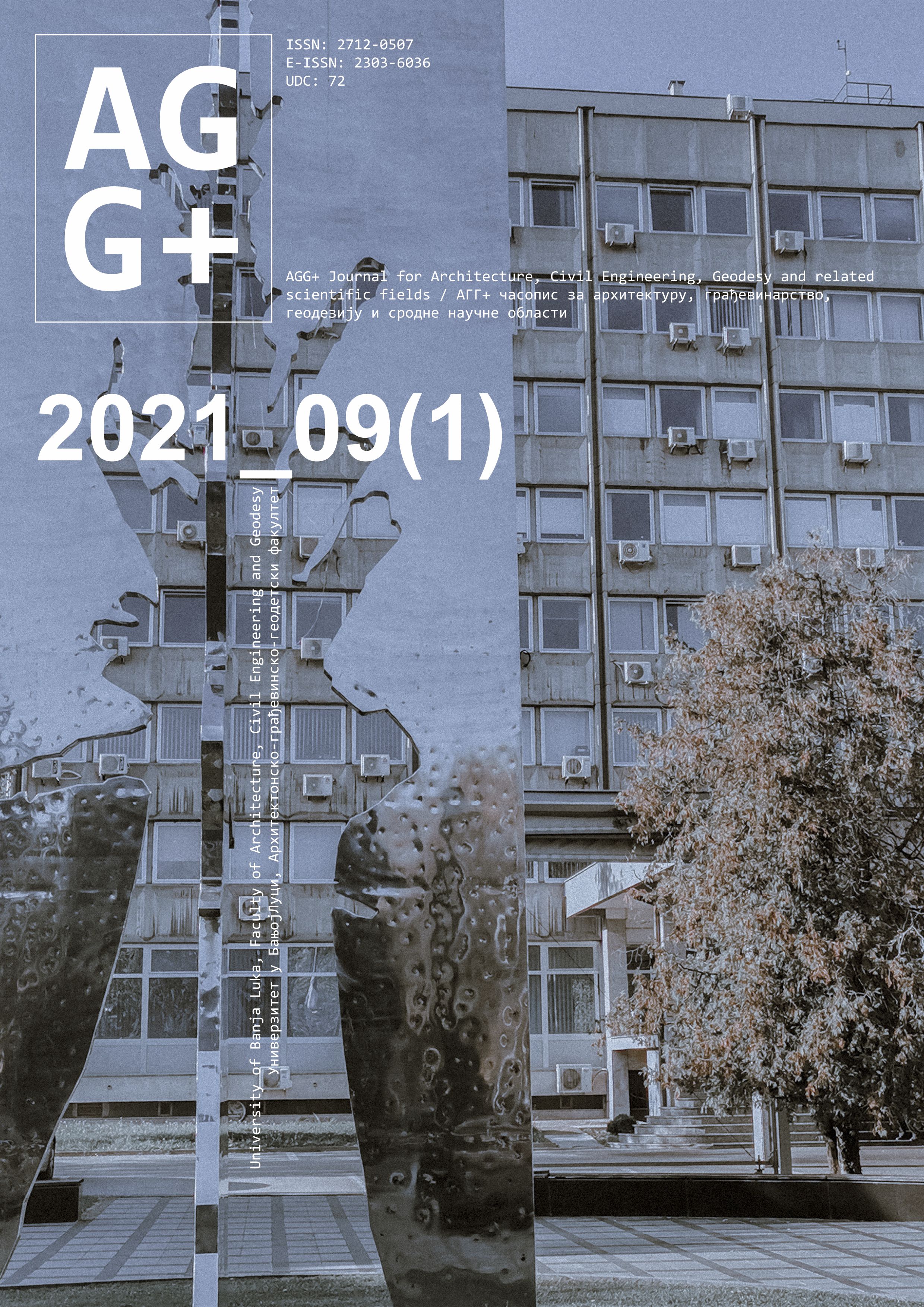Accuracy Analysis of GNSS Permanent Station Coordinates Using the Least Square Method by Processing Broadcast and Precise Ephemerides
DOI:
https://doi.org/10.7251/AGGPLUS/2109068DKeywords:
GNSS, least squares method, broadcast ephemerides, precise ephemeridesAbstract
This paper analyses how broadcast and precise ephemerides in alignment, using the least-squares method, affect the accuracy of coordinates of the newly included permanent stations. It has been shown that in practice, when аdjusting networks whose span between points exceeds 50 km, the adjustment procedure should be carried out using the adopted precise ephemerides for a specific observation period. Precise ephemerides are recommended for 30 to 50 km baseline lengths, while adjustments with broadcast ephemerides achieves satisfactory accuracy for shorter lengths. For baseline lengths of 30 to 50 km, the use of precise ephemerides is recommended, and for shorter lengths, adjustment with broadcast ephemerides achieves satisfactory accuracy. This paper analyses statistics and presents standard deviations of horizontal and vertical positions, when broadcast and precise ephemerides are applied.
References
W.H. Wooden, “Navstar Global Positioning System,“ in Proceedings of the first International Symposium on Precise Positioning with Global Positioning System, vol. 1, Rockville, Maryland, April 1985, pp. 23-32.
D. Blagojević, Uvod u satelitsku geodeziju. Beograd: Građevinski fakultet Univerziteta u Beogradu, 2014.
A. Noureldin, T.B. Karamat, J. Georgy, Fundamentals of Inertial Navigation, Satellite-Based Positioning and their Integration. 1st ed. New York: Springer-Verlag Berlin Heidelber, 2013.
G. Schütze, “GPS (Part 2), physical and technical errors of GNSS - an error analysis,“ in Marine-Pilots. International Network and Community, December 2019. [Online]. Available: www.marine-pilots.com/articles/14518-gps-part-2-physical-and-technical-errors-of-gnss-error-analysis
P. Misra and P. Enge, Global Positioning System: Signals, Measurements and Performance. Massachusetts: Ganga-Jamuna, 2010.
„IGS Products“. IGS. International GNSS Service. http://www.igs.org/ products/ (accessed Dec. 10, 2020).
A. Roulston, N. Talbot, K. Zhang, "An Evaluation of Various GPS Satellite Ephemerides," in Proceedings of the 13th International Technical Meeting of the Satellite Division of The Institute of Navigation (ION GPS 2000), Salt Lake City, UT, 2000, pp. 45-54.
H.P. Plag and M. Pearlman, Global Geodetic Observing System: Meeting the Requirements of a Global Society on a Changing Planet in 2020. Berlin: Springer, 2009.
Z. Altamimi and X. Collilieux, “IGS contribution to the ITRF,“ Journal of Geodesy, vol. 83, no. 3/4, pp. 375–383, 2009.
J. M. Dow, R. Neilan, C. Rizos, “The International GNSS Service in a changing landscape of Global Navigation Satellite Systems,“ Journal of Geodesy, vol. 83, pp. 191–198, 2009.
G. Johnston, A. Riddell, G. Hausler, “The International GNSS Service,“ in Springer Handbook of Global Navigation Satellite Systems (1st ed.). P. Teunissen, O. Montenbruck. Switzerland, Eds., Cham: Springer, 2017, pp. 967-982.
J. Klobuchar, “Ionospheric time-delay algorithm for single-frequency GPS users,“ IEEE Transactions on aerospace and electronic systems, vol. 3, pp. 325-331, 1987.
J. Juan, M. Hernández-Pajares, J. Sanz, P. Ramos-Bosch, A. Aragón-Àngel, R. Orús, et al., “Enhanced precise point positioning for GNSS users,“ IEEE transactions on geoscience and remote sensing, vol. 50, no. 10, pp. 4213-4222, 2012.
J. Bosy, “Global, Regional and National Geodetic Reference Frames for Geodesy and Geodynamics,“ Pure and Applied Geophysics, vol. 171, pp. 783–808, 2014.
H. Seeger, W. Augath, R. Bordley, C. Boucher, B. Engen, W. Gurtner, W. Schlüter, R. Sigl, “Status-report on the EUREF-GPS-Campaign 1989 to the IAG EUREF Subcommission,” Veröffentlichungen der Bayerischen Kommission für die Internationale Erdmessung, vol. 52, pp. 26–34, 1992.
R. M. Alkan, S. Erol, I.M. Ozulu & V. Ilci, “Accuracy comparison of post-processed PPP and real-time absolute positioning techniques,“ Geomatics, Natural Hazards and Risk, vol. 11, no. 1, pp. 178-190, 2020.

